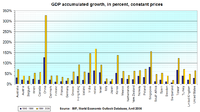
Photo from wikipedia
Abstract Silvicultural success in achieving, among other management goals, maximum productivity strongly depends on knowledge of the relationship between stand density and the resulting growth response of a stand. However,… Click to show full abstract
Abstract Silvicultural success in achieving, among other management goals, maximum productivity strongly depends on knowledge of the relationship between stand density and the resulting growth response of a stand. However, there are still controversial discussions whether wood production can be enhanced by silvicultural thinning or reaches its maximum in unmanaged forest stands if time plays no role. Moreover there is no universal answer whether structural diversity promotes or reduces productivity. In the present study we applied terrestrial laser scanning (TLS) to investigate the relationship between three-dimensional space filling, forest management intensity, productivity and conventional measures of structural diversity. We examined 35 beech-dominated forest plots along a gradient of management intensity in three regions of Germany. We found that space filling in leaf-on condition increased with management intensity, particularly in the shaded crown. Increased space filling in the shaded crown due to tree removals also resulted in higher stand productivity. We conclude that an increased space filling in the shaded canopy of managed European beech stands is responsible for the compensation of production losses in the upper canopy due to thinning activities. Conventional measures of structural diversity were not sensitive to the applied silvicultural activities. We also found no relationship between structural diversity described by conventional measures and stand productivity.
Journal Title: Forest Ecology and Management
Year Published: 2017
Link to full text (if available)
Share on Social Media: Sign Up to like & get
recommendations!